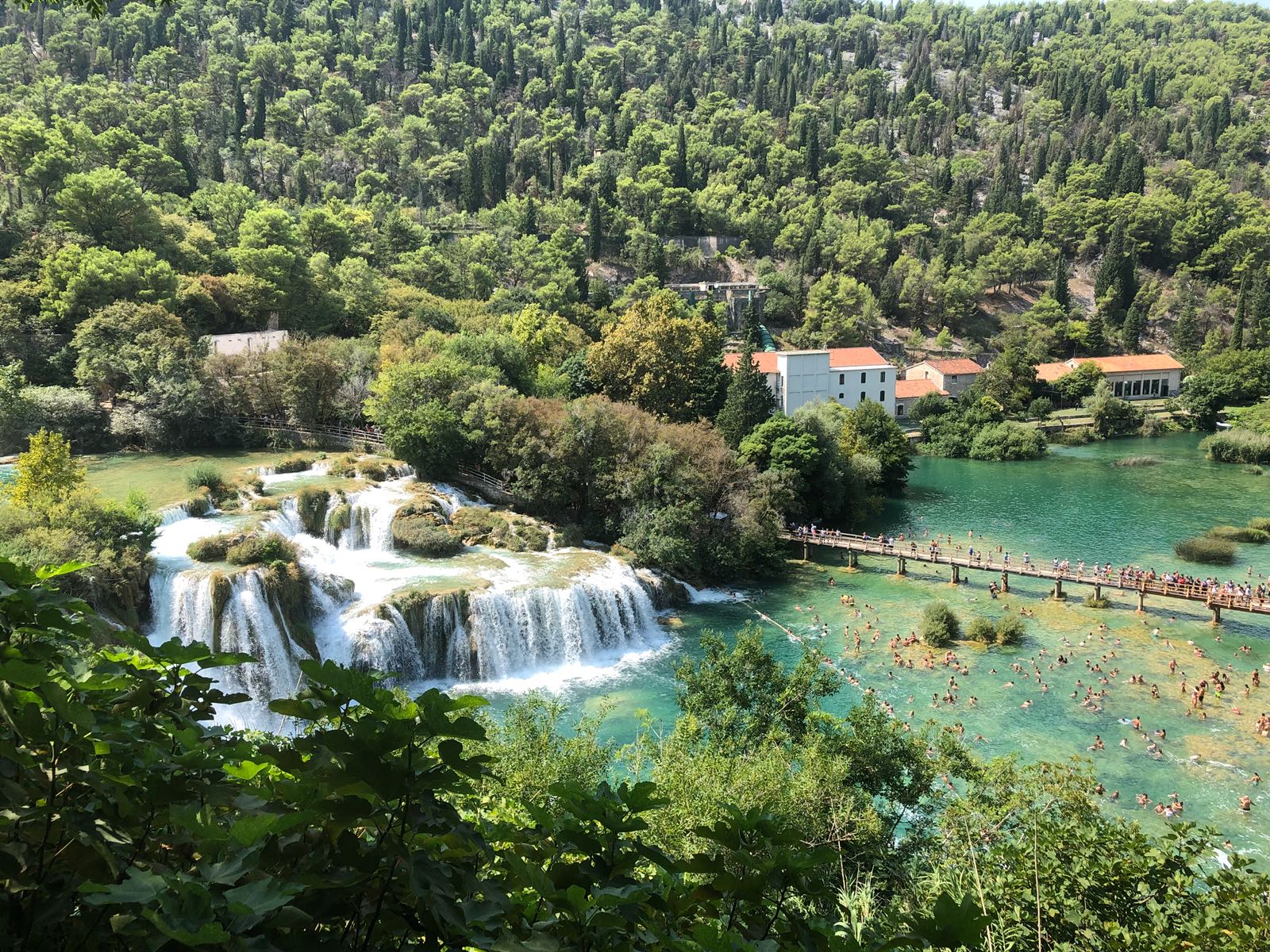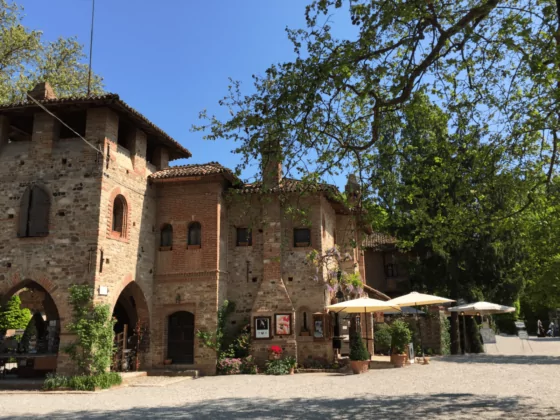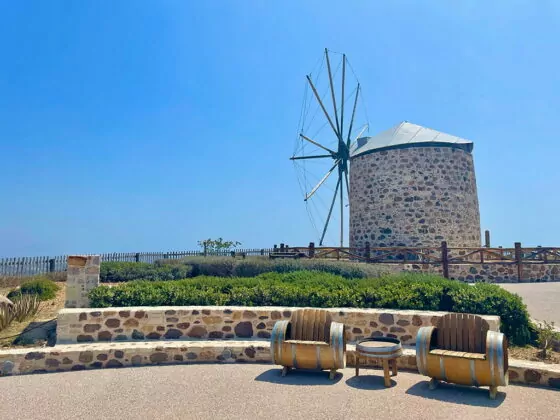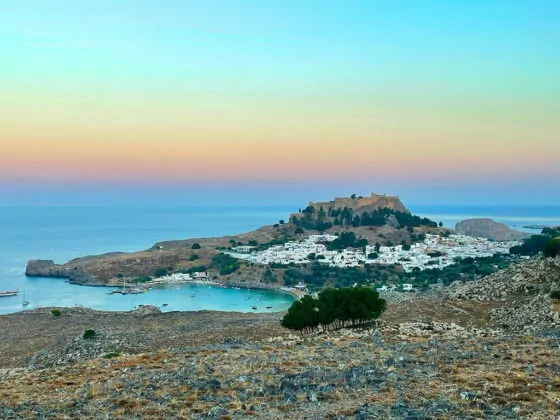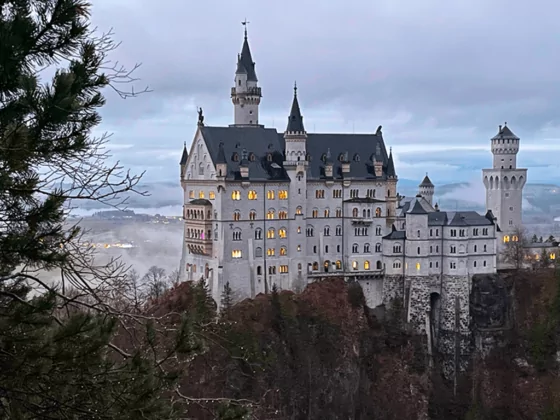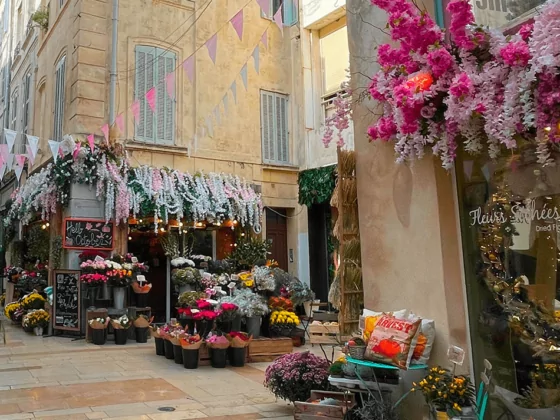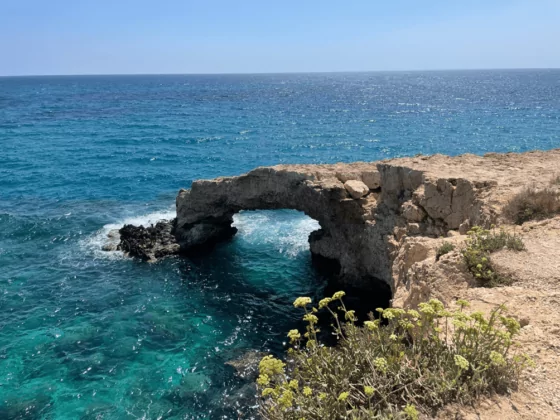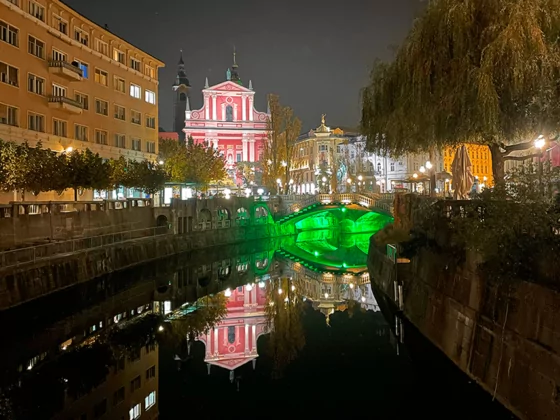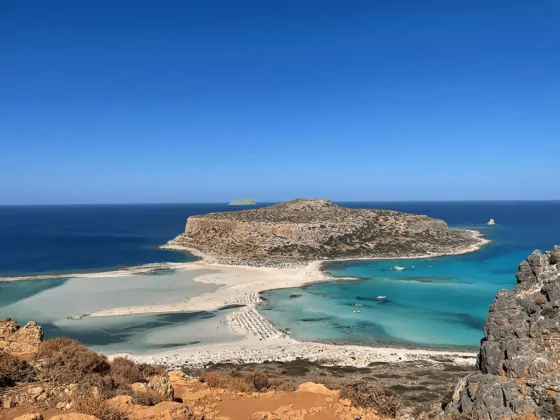The Croatia tour was our first real trip together, we were still getting to know each other, getting used to it. We organized it on a weekend in July without planning too much, just choosing where to sleep (I couldn't immediately give free rein to my obsessive compulsive mania of planning everything). We left by car and let ourselves be transported by the beauties that Croatia has to offer... sea, parks, culture... the ingredients are all there!
Tips for Trips: Even though Croatia is part of the European Union, the currency is the Croatian kuna. The word kuna means "marten" and takes us directly back to the Middle Ages when animal furs - very often martens - were used as trade goods in Croatia. One kuna is made up of one hundred lipa which in turn means "linden".
Update 01/01/2023: Croatia joined the euro area by adopting only the euro as its currency.
- Itinerary in a nutshell
- Day 1: River
- Day 2: Plitvice Lakes
- Day 3: Split
- Day 4: Klis Fortress, Žrnovnice shore and Hvar
- Day 5: Fortica Fortress and Dubovica Beach
- Day 6: Milna
- Day 7: Dubrovnik
- Day 8: Copacabana Beach and Sibenik
- Day 9: Krka National Park and Zadar
- Day 10: Zadar and Kraljičina plaža
- Day 11: Trieste and return
Itinerary in a nutshell
Our trip lasted 10 days. Driving for 2400km we explored the entire coast of Croatia starting from Istria and pushing to the edge of Dalmatia.
Tips for Trips: To get to Croatia from Italy you have to cross Slovenia, where to drive on the motorway you need to buy a vignette. This can be purchased both at petrol stations in Slovenia and in neighboring countries and must be positioned on the windshield so as to be visible to the cameras present at the entrance to each junction. Alternatively, you can take the E61 state road - the state roads are marked yellow - which connects Trieste to Rijeka and which does not require a vignette.
We slept in Rijeka, Split, Hvar, Dubrovnik, Sibenik, Zadar and Trieste. We immersed ourselves in the most luxuriant nature by visiting the Plitvice lakes and the Krka National Park. We couldn't miss the visits to the places related to the Game of Thrones (because we are a bit nerdy): the Klis Fortress aka Meereen, Dubrovnik aka King's Landing, Sibenik aka Braavos, the Lovrijenac Fortress aka the Red Fortress, the Minčeta Tower aka the House of the Undying, Diocletian's Palace aka Daenerys' Meereen Throne Room.
If you are curious to find out more, here are the stages of our journey day by day.
Day 1: River
After more than 5 hours by car, off-key songs, traffic, dancing, roadworks and stops at service stations, we arrive in Rijeka in the late afternoon. We chose it as a base to break up the journey and to be close enough to the next stop. We only stay one day so let's not waste time and go exploring.
Rijeka has a lively city center that develops around the main street, the Korzo, a long pedestrian street that in the evening is filled with stalls selling food and souvenirs. Along the walk we come across the famous one Civic Tower, built in the Middle Ages but with Baroque influences and a door full of imperial coats of arms in relief. We continue the walk along Ulica Ante Starčevića until we reach the Jelačić Square fountain where we stop to taste some typical local delights. We continue wandering up and down the alleys of the center and we find ourselves in front of what we later discover is the famous Petar Kružić Stairway, a walk of 561 steps that goes up the hill to take us to Trsat Castle an unexpected treasure that amazes us, its visit alone is worth a stop in Rijeka. It is one of the oldest fortifications in Croatia which preserves the typical characteristics of early Middle Ages buildings. In summer the castle hosts summer concerts, theatrical performances and other cultural events but is equipped with a charming venue where you can sip something cool in a suggestive setting with a breathtaking view.
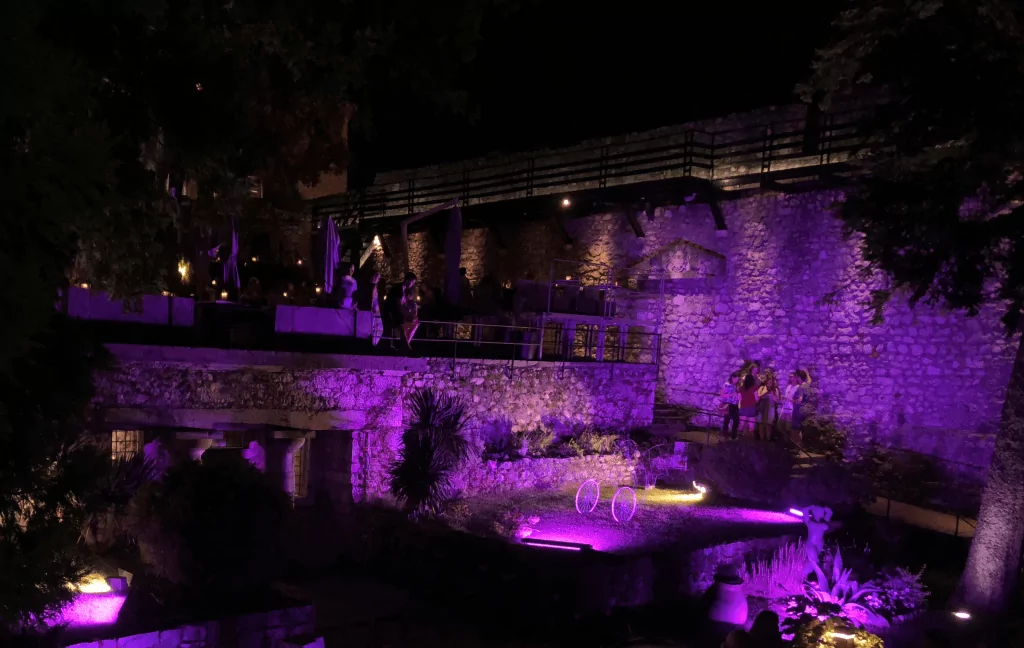
Day 2: Plitvice Lakes
Woke up very early and set off straight away: i Plitvice Lakes they are the oldest and largest park in Croatia. The park is located halfway between Zagreb, the capital of Croatia, and Zadar in Dalmatia and is made up of 16 lakes fed by the Bijela Rijeka and Crna Rijeka rivers – White River and Black River – and by underground springs, connected to each other by a series of waterfalls, which flow into the Korana River. Of the 16 lakes, 12 are located in the upper part, in a dolomite valley, surrounded by forests and connected by spectacular waterfalls, and 4 in the lower part are smaller and with lower vegetation. To move around the park, beyond the wooden walkways, electric boats, boats and a train are available.
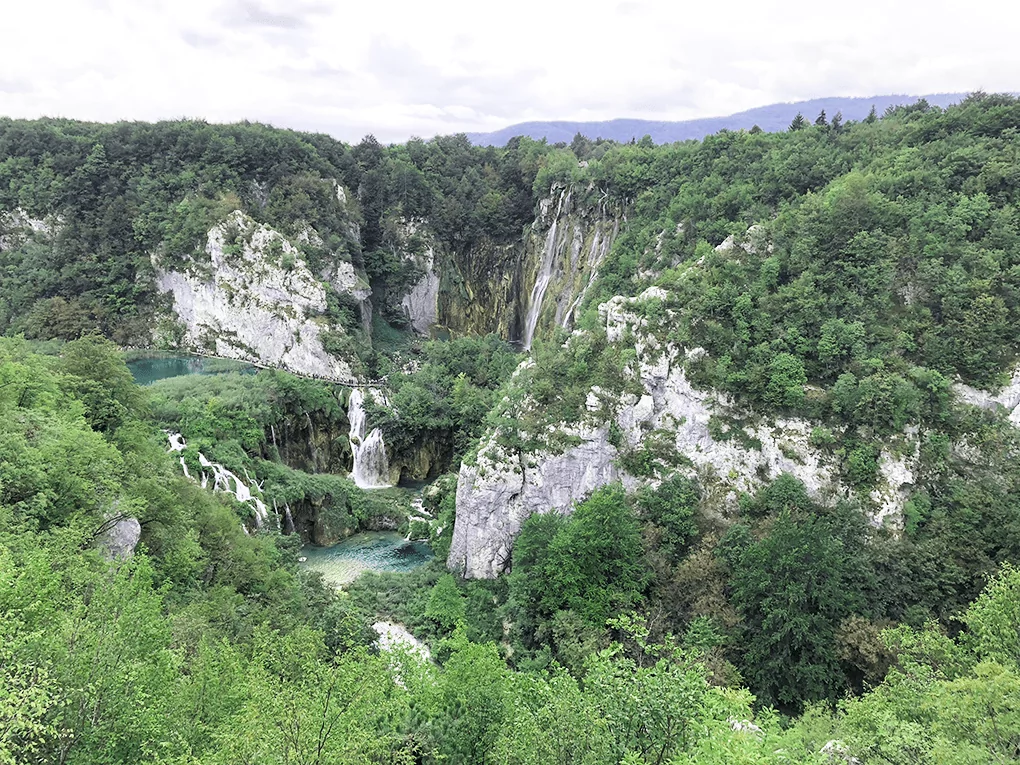
Opening hours: Summer 7am - 8pm, winter 8am - 4pm (entrance 2 closed in winter).The park is divided into 4 paths organized into 7 routes of different duration and difficulty. Here find the details of the routes. We followed route C, the right compromise between Paolino's laziness and my desire to see everything. The route begins at the northern entrance (entrance 1) and runs for 8 km, taking in both the upper and lower lakes. Once you have crossed Lake Kozjak by ferry, you continue the excursion along three other lakes to Lake Proscansko. The return can be done with the panoramic train, we continued on foot until returning to the starting point.
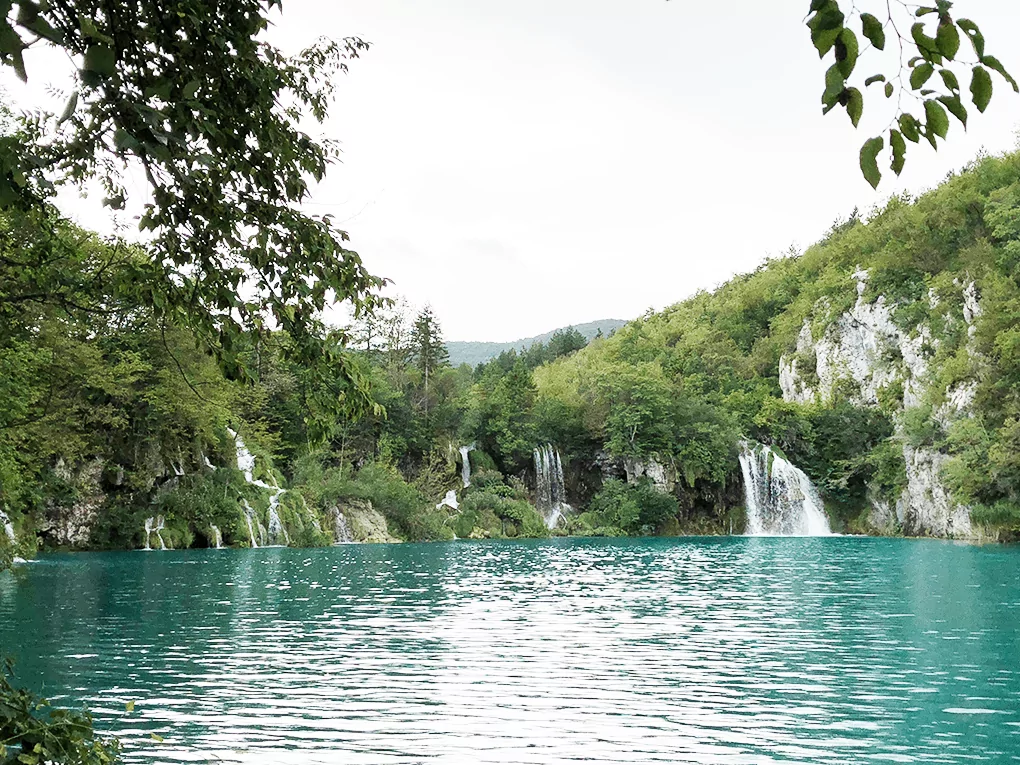
It is truly difficult to describe in words the pristine beauty of the place, the breathtaking colors of the lakes and the wonder of nature all around. Without a doubt I can say that it is one of the most beautiful parks we have visited.
With beauty still in our eyes we head towards Split.
Day 3: Split
Let's start with a visit to the center of Split. We walk through the old city, starting from Piazza del Popolo – the heart of the old city – and we seem to travel through time, from ancient Rome, through the Middle Ages between Romanesque churches and Gothic palaces, Renaissance facades and Baroque palaces.
The historic center of Split is a labyrinth of alleys and narrow streets that branch around the Diocletian's Palace, declared a World Heritage Site by UNESCO. The palace is a rectangular construction with four large corner towers and four smaller towers which is accessed through four main doors: the Iron Gate, which connects Piazza del Popolo to the palace, with its Renaissance clock and bells that mark the passage of time; there Golden Gate, quadrangular in shape, with double doors whose façade is decorated with niches that housed sculptures depicting Diocletian, Maximian, Galerius and Costanzo Cloro; there Silver Gate, more modestly decorated, which from the Middle Ages until the middle of the last century was walled and on whose sides you can see the remains of the octagonal towers; there Porta Aenea, of more modest dimensions which, through the underground, allowed access to the sea but which today connects the palace to the shore, the Split seafront, always lively and full of tourists.
One of the most beautiful buildings of the palace is the Cathedral of St. Domnius in which the different historical eras are evident through the various architectural elements, from Roman times to modern times. The hexagonal pulpit is from the 13th century, the altar tabernacle, the frescoes of the four evangelists and the sarcophagus date back to the first half of the 15th century, while the main altar is from the 17th century. The church is dedicated to the Virgin Mary, while the bell tower is actually dedicated to Saint Domnius.
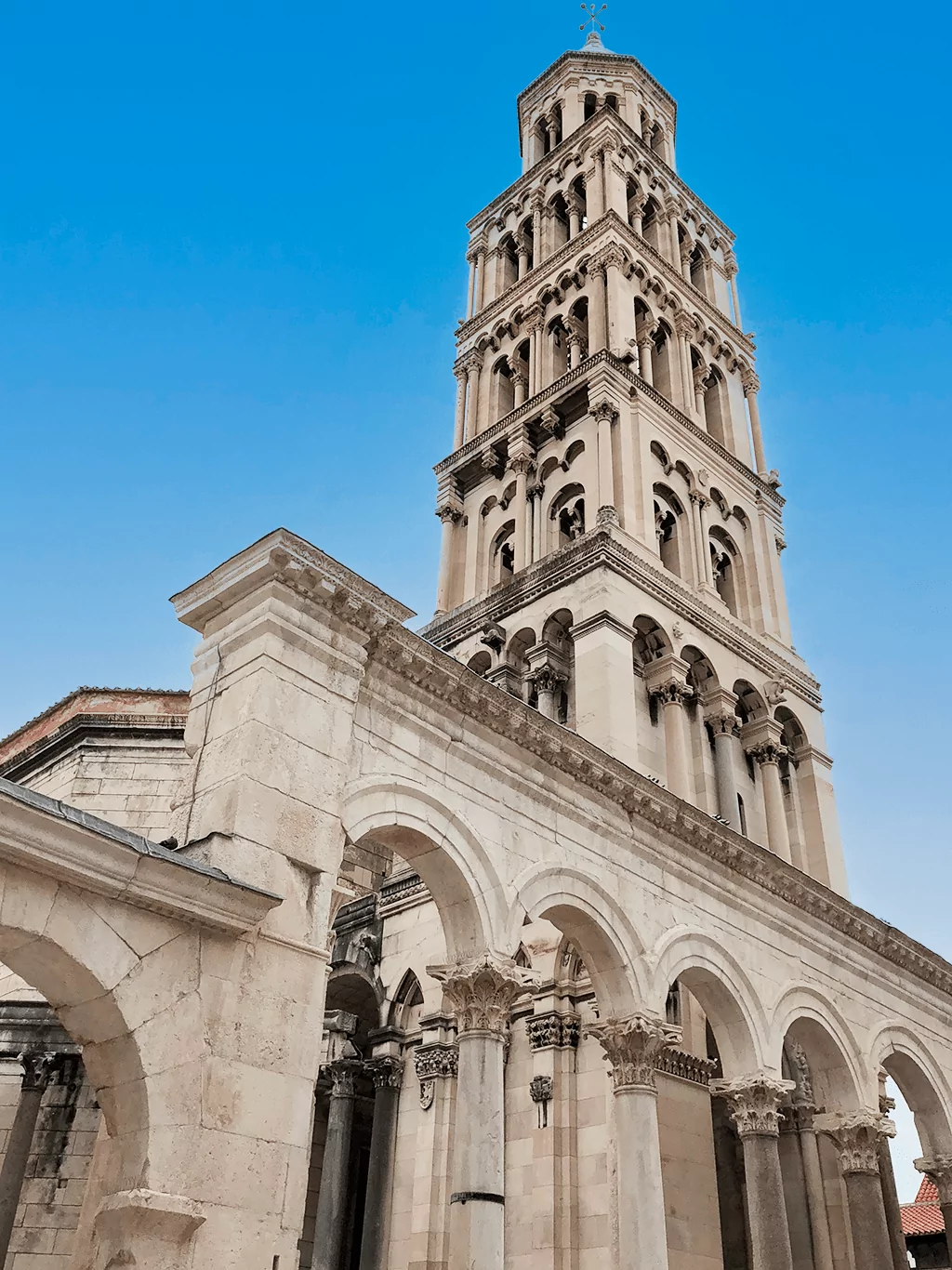
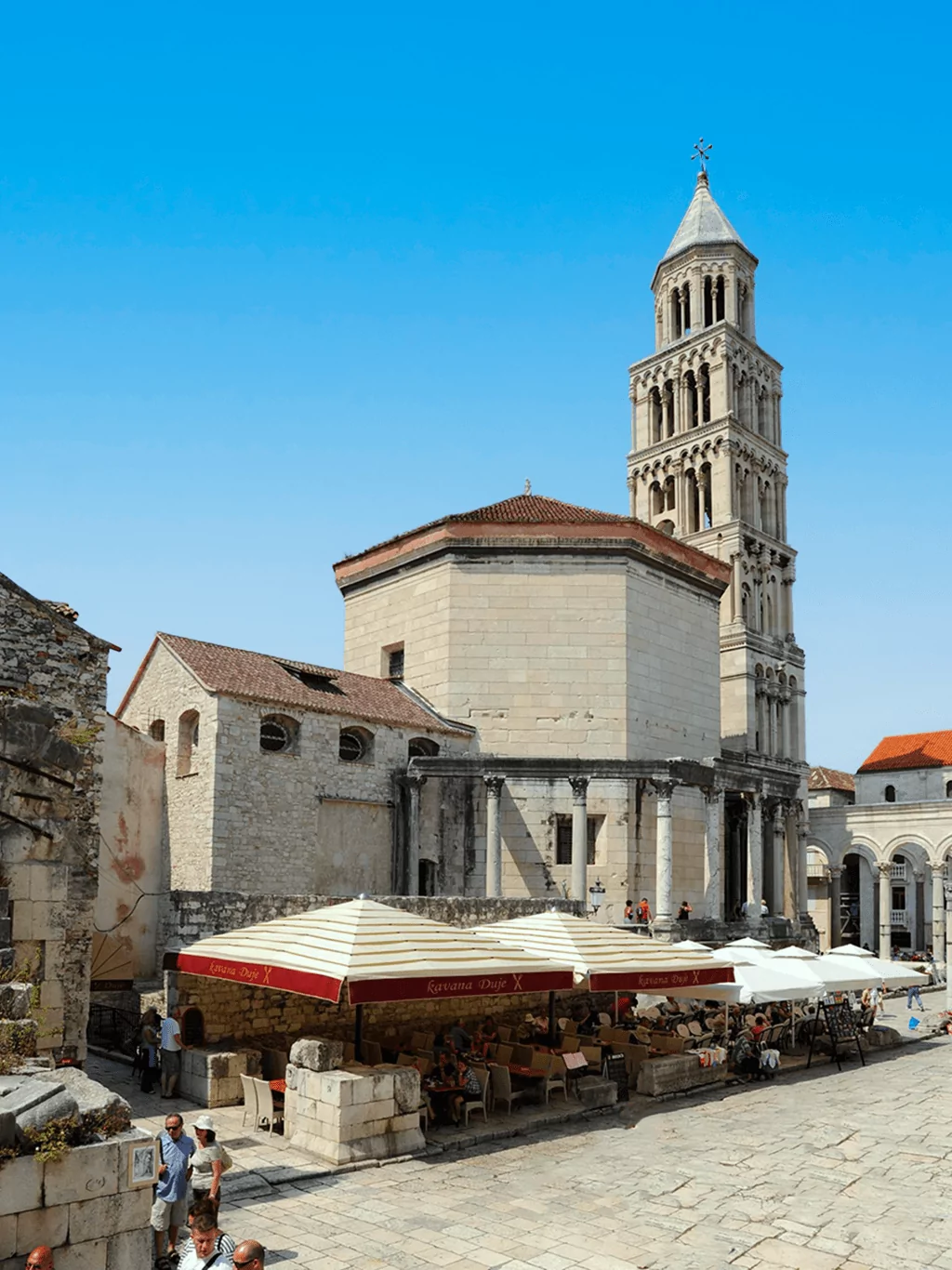
Close to the cathedral Temple of Jupiter dating back to the 4th century. Since the 7th century, when the final resting place of Emperor Diocletian was transformed into a cathedral, the Temple of Jupiter has served as a baptistery. The temple is full of reliefs carved in limestone depicting various motifs of flowers, leaves and heads of Roman gods and goddesses – including Jupiter, Apollo, Victoria, Triton and Hercules – and is also adorned with the bronze statue of St. John the Baptist created by Croatia's most famous sculptor, Ivan Mestrovic.
In the center of the building the Peristyle, the central square of the palace and the place where city life takes place. The red color of the granite columns underlines its ceremonial function since purple became the color of the emperor. Today, the western part is closed by the palaces of the noble families of Split, combined with its authentic columns and arches.
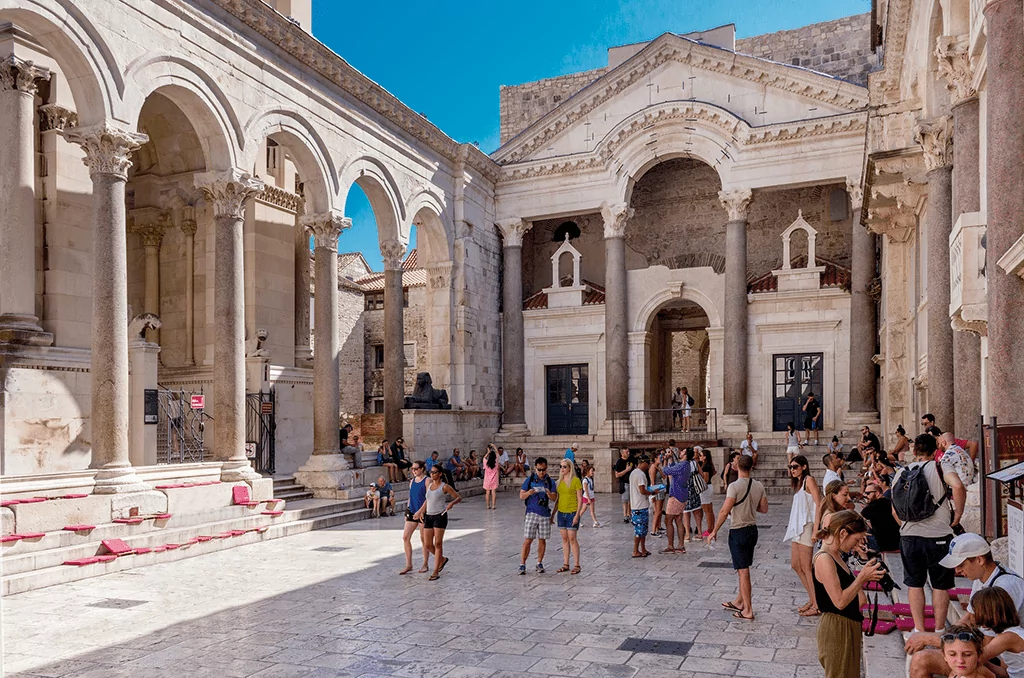
At the entrance to the imperial residence is the Vestibul, first section of the imperial corridor leading from the Peristyle to the imperial apartments. Externally circular but internally circular in plan, once surmounted by a dome and adorned with four semicircular niches which have been filled with statues of unknown deities.
Through a staircase you go down to the Basements of the Palace, whose original function was to raise the spaces of the emperor's apartments above, but they also served as warehouses for the Palace. Today they are full of stalls selling everything from paintings to bracelets to used books and where exhibitions are often held. This basement was the setting for where Daenerys Targaryen kept her dragons in her palace. On the other side of the underground, through the Aenea gate, we emerge onto the shore and this is where our tour of the palace ends.
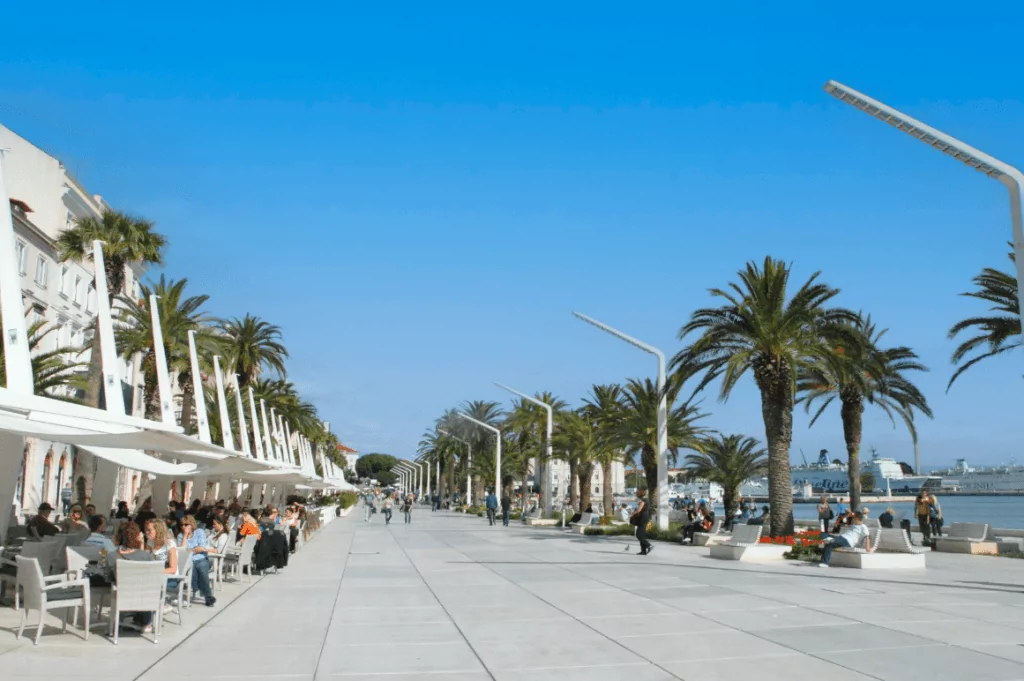
In the afternoon we treat ourselves to some relaxation and sun in the nearby one Firule Beach, until sunset and an aperitif at the end of a wonderful day.
Day 4: Klis Fortress, Žrnovnice shore and Hvar
We move from Split to Hvar, but first we make a detour to visit two symbolic places of the fourth season of GoT.
There Klis Fortress it is a medieval fortress built at an altitude of 360 meters to control the invasion of enemies. Due to its strategic location between two mountains, Kozjak and Mosor, the fortress played a very important role in the defense of the whole of Dalmatia, especially when it comes to the Ottomans and their invasions. Klis was used as the setting for the city of Meereen, the most significant metropolis of the Bay of Dragons, where Daenerys freed all the slaves from their chains.
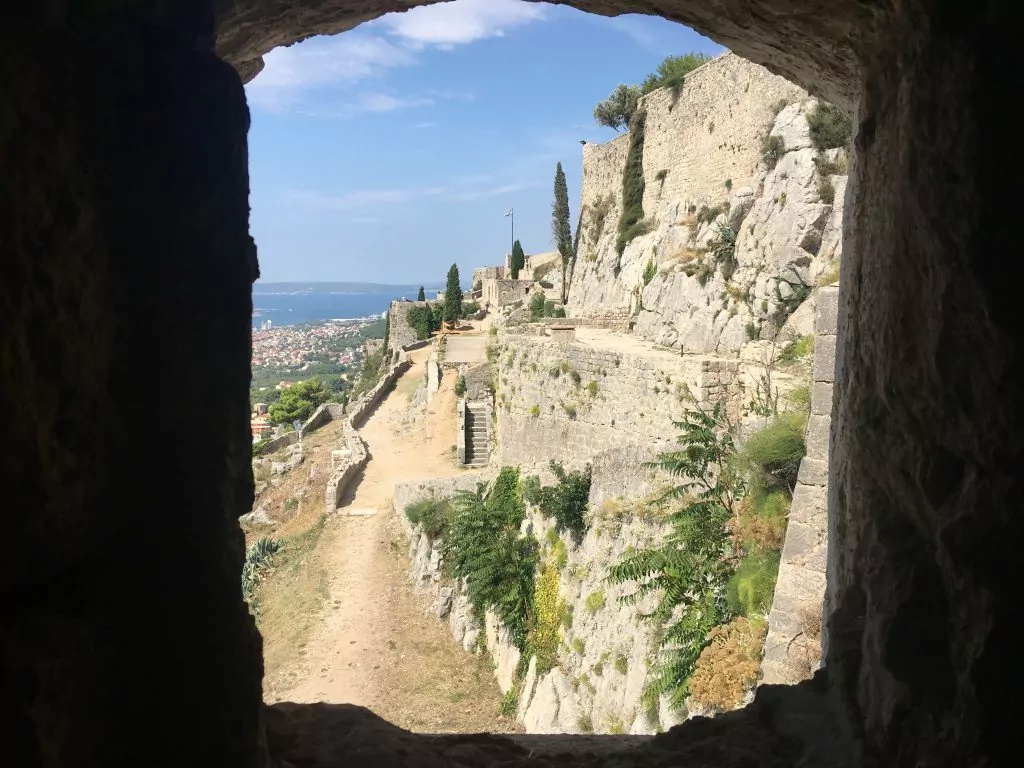
We move towards the village of Žrnovnica and we take a walk on the banks of the river of the same name, an iconic place where a little Immaculate Gray Worm peeked at Daenerys' faithful advisor, Missandei, while she was bathing.
We get in the car, we have a ferry not to be missed!
Tips for Trips: There are two possibilities to get to the island of Hvar. The first is to get to Stari Grad, the largest port on the island, located 1.5 km from the town of the same name and 17.3 km from Hvar town. The second is to get to Sućuraj, which is 60 km from Stari Grad and 70 from Hvar town, and connects the easternmost point of the island of Hvar and the town of Drvenik on the mainland. We decide to do the Drvenik – Sućuraj route because it is less frequented. It is not necessary to book the ticket in advance, just stand in line and wait to board one of the ferries which leaves approximately every hour and a half. Upon arrival, however, you have to cross the entire island since Hvar town is on the opposite side... of course the wild and beautiful landscape makes you appreciate the road.
We spend the remainder of the day at Hvar. There city, a small jewel in Venetian style, is surrounded by 13th century walls, strengthened in the Renaissance. We walk through the streets of the centre, a succession of Gothic and Renaissance palaces, fortresses and Baroque buildings. In the center of the city is the Trg Svetog Stjepana, a rectangular square that starts from St. Stephen's Cathedral – baroque church built between the 16th and 17th centuries – and extends to the small port.
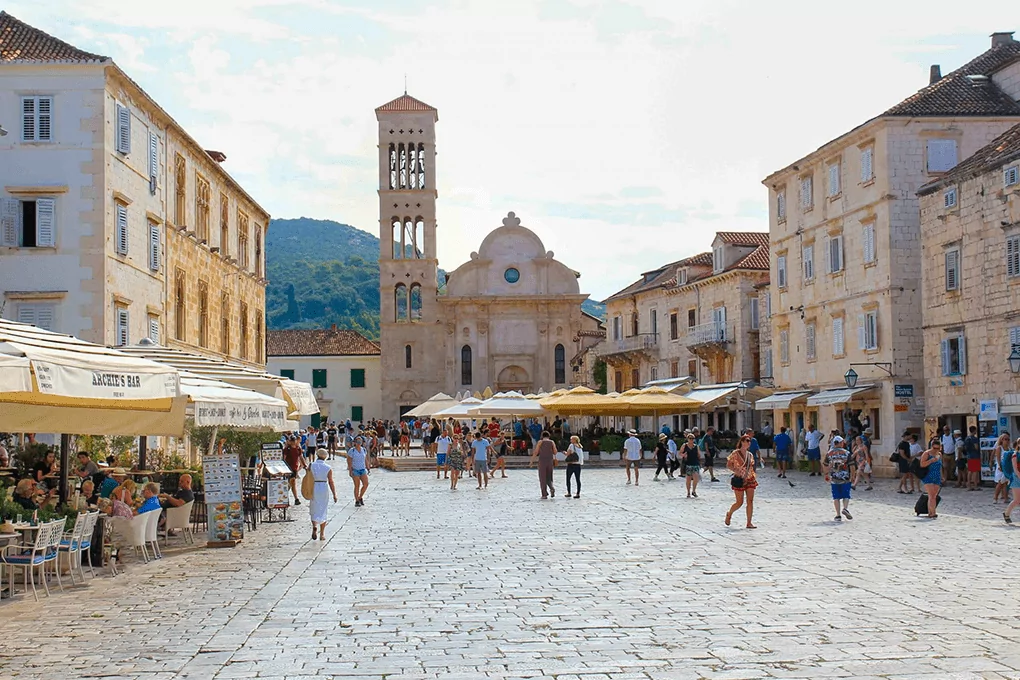
Overlooking the port is the Venetian Loggia, a Renaissance building that was once part of the Governor's palace, which was severely damaged by the Ottomans in the late 16th century. Immediately next to it Clock tower added around 1800 replacing the previous one destroyed by the Ottomans.
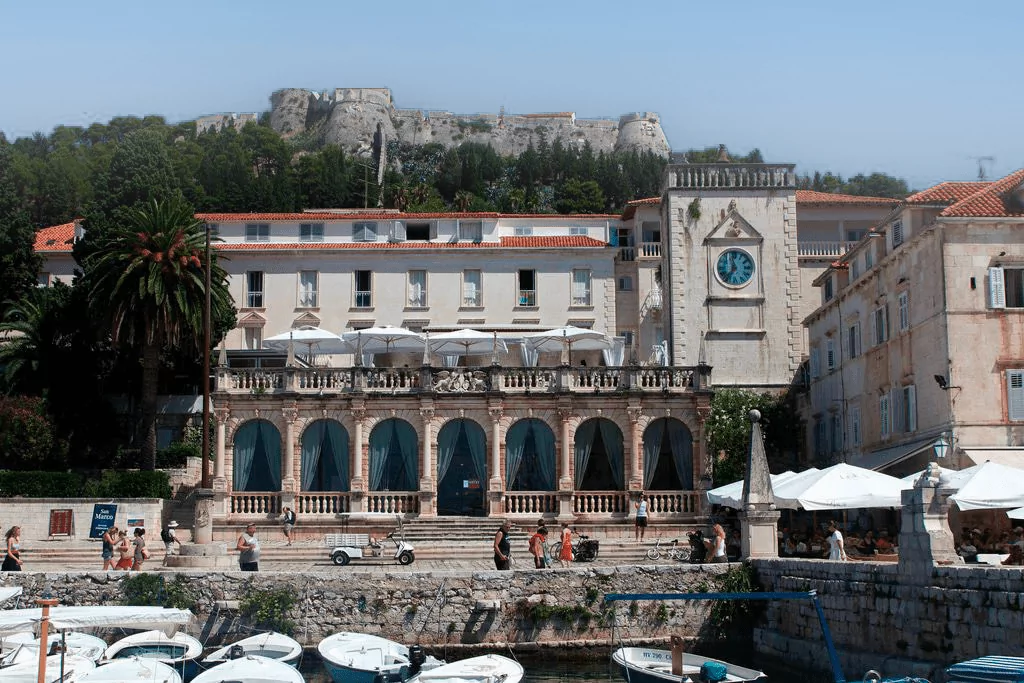
We spend the evening on the seafront and after an excellent dinner we take a long walk along it Fabrika – which flows into Šetalište Tonija Petrića – a long stone sidewalk that goes around the entire coast of the port between green parks, small restaurants and coves by the sea.
Day 5: Fortica Fortress and Dubovica Beach
In the morning we return to Hvar to visit the famous Fortica Fortress (Spanish) which overlooks the old city. Starting from the central square we go up the stairs that cross the old part of the city and go up the small serpentine filled with the scent of Mediterranean vegetation, until we reach the top of the hill where the fortress is located. It was built at the beginning of the 16th century and rebuilt after an explosion in the gunpowder warehouse destroyed it in 1579, but it owes its final appearance to numerous subsequent modifications. The walls were reinforced by the French, the barracks and sentry towers were built by the Austrians and today it houses a collection of amphorae and ancient and medieval objects. The strong point of the fortress is certainly the breathtaking view you can enjoy once at the top: it dominates the entire city, the sea and the Pakleni.
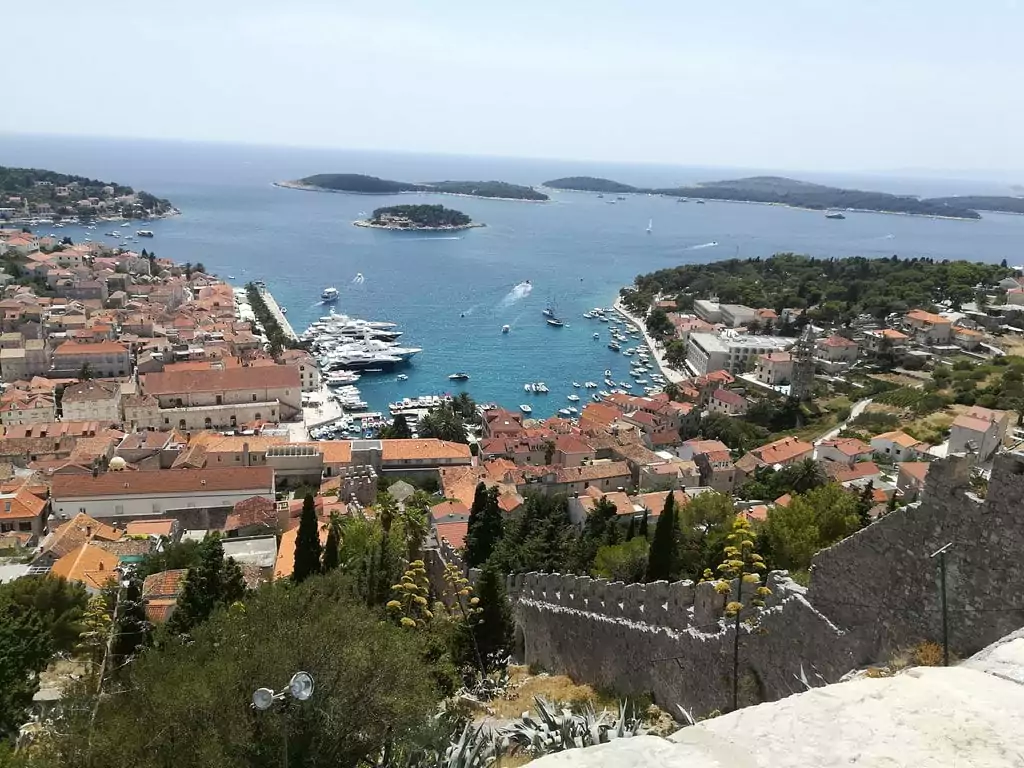
Hours: Every day 9:00 - 21:00.Afternoon dedicated to relaxation on one of the most famous and beautiful beaches of Hvar, la Dubovica beach it does not disappoint our expectations. The pebble beach is nestled inside a bay surrounded by a complex of small stone houses and a sea with intense shades. On the beach there is a small bar, poorly equipped, where you can enjoy Yspizchè cocktails in a local atmosphere.
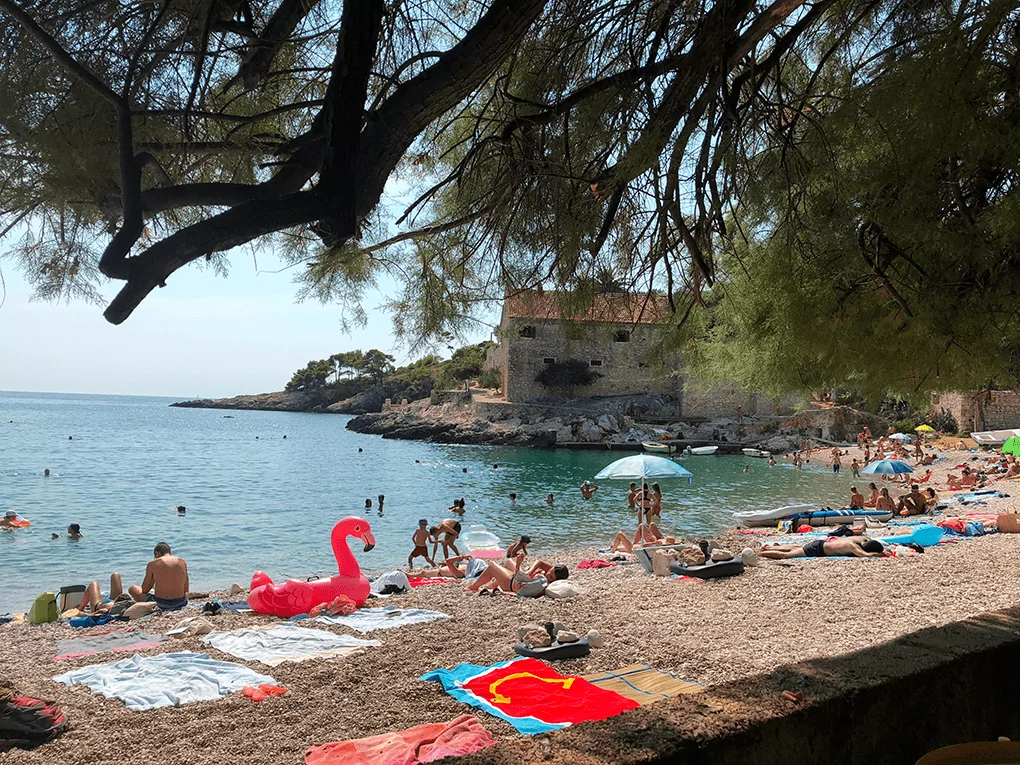
Day 6: Milna
Today we leave the island, so as not to go too far we spend the morning in the coves around Milna.
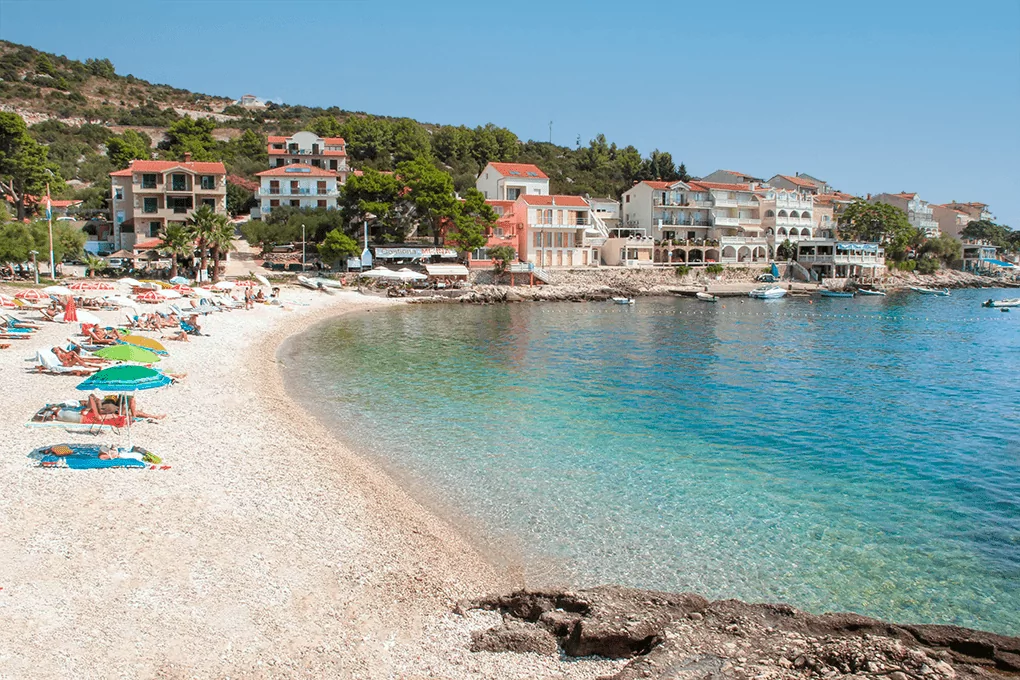
After lunch we cross the entire island until we reach Sućuraj, where we take the ferry back to Drvenik. Once we return to dry land we set off again towards Dubrovnik.
Tips for Trips: Due to the access to the sea granted to Bosnia and Herzegovina, Croatia is split in two. To get to Dubrovnik you must therefore cross the border. The checks, double on both sides, were quick and we had no problems. Since 2022, however, Croatia has opened a 2.4 kilometer bridge that extends from the Croatian mainland to the Peljesac peninsula, which connects with the southern part of the Croatian coast nestled between the sea and the Dinaric Alps. In this way it connects its southern Adriatic coast, including Dubrovnik, with the rest of the country, bypassing a narrow strip of Bosnian territory.
Day 7: Dubrovnik
Finally the day has arrived, we are preparing to visit Dubrovnik. The old Town - King's Landing for us – it has been declared a UNESCO heritage site. Gathered around the ancient walls, it is small enough to be explored on foot. We venture through the streets that go up and down in all directions starting from the central street among hidden squares, restaurants and cats dozing on the steps of the alleys.
Our itinerary starts from Pila holder, one of the three access gates to the historic centre, dating back to 1537 and on top of which is the statue of San Biagio, the patron saint of the city.
Once through the door we find ourselves in front of the Great Onofrio Fountain, one of the most famous monuments of the city, which for centuries has represented the main source of water supply in the city. It starts from here Stradun, the main street - completely pedestrian - which runs through the entire historic center, full of clubs, cafes, shops and shops.
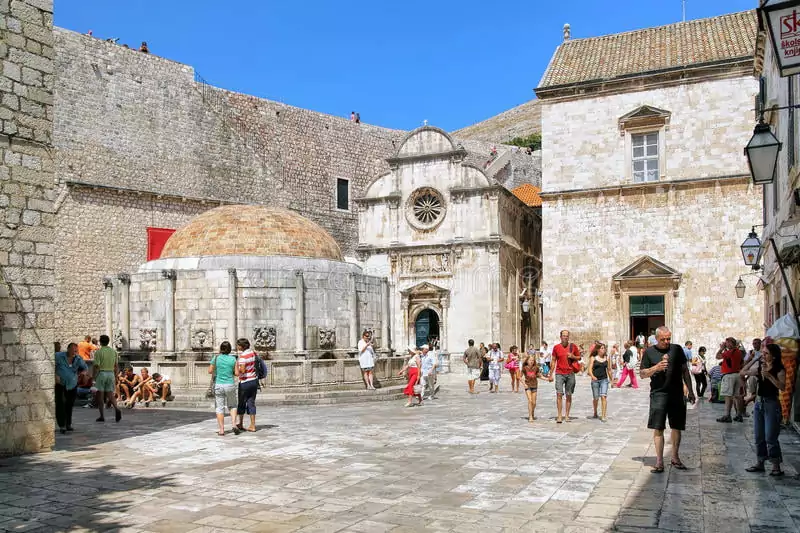
Traveling along the Stradun you arrive at Loggia Square, surrounded by wonderful palaces, such as the Sponza Palace, the Loggia delle Campane, the Palazzo della Gran Guardia and the minor Onofrio Fountain. Here you can also find the Church of San Biagio, in baroque style, dedicated to the patron saint of the city. At the end of the street the beautiful Clock tower, built in the 15th century. Crossing the gate at its feet you arrive at the city port.
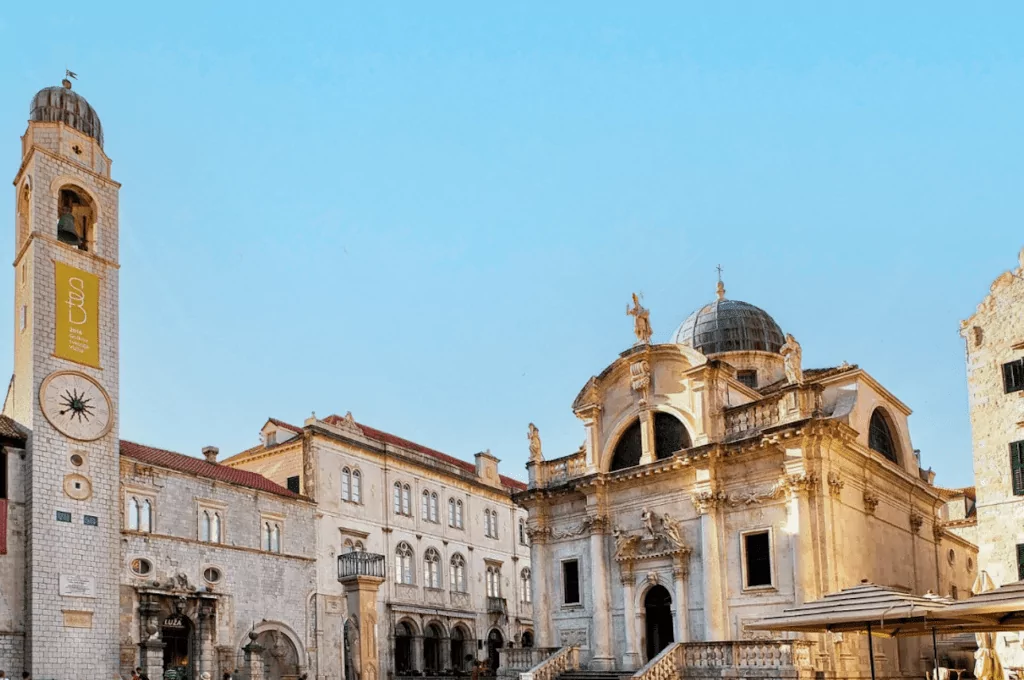
We cross the port and re-enter the citadel through a second door that takes us to the Cathedral of the Assumption of Mary, a place of great importance as it houses the relics of the patron saint San Biagio. What we can visit today is the reconstruction of the Cathedral: the original, built in the 7th century, was destroyed by the earthquake of 1667. On the right is the Rector's Palace in Gothic and Renaissance style.
For lunch we stop at Gundulićeva Poljana, a square animated every morning by the flower, fruit and vegetable market and full of bars and trattorias. After lunch we visit the Church of Sant'Ignazio, another unmissable stop as it hosts the steps of Cercei Lannister's famous Walk of Shame. The stairs of the church were designed in 1738 by Pietro Passalacqua on the model of the Spanish Steps in Rome.

We end the day with Tour of the Walls considered one of the largest and best preserved fortification systems of the Middle Ages. The route, two kilometers long, passes through sixteen towers and four fortresses. There Minčeta Tower – the House of the Eternals – historic 14th century fortification, on the north-west tip, is the highest point of the walls of Dubrovnik and offers spectacular views of the city and the open sea. On the opposite side, the Revelin Fortress, which dates back to the 16th century, looks over the old city port and the eastern entrance to the city, the Ploče Gate. In the 14th century the Fortress of San Giovanni defended the port from the south-east side, while the Bokar Fortress defended the Carry batteries and offers the most beautiful view on Lovrijenac Fortress – the Red Fortress – which rises 37 meters above sea level. Furthermore, the bay on which the Fortress overlooks was the scene of the iconic Battle of the Black Waters.
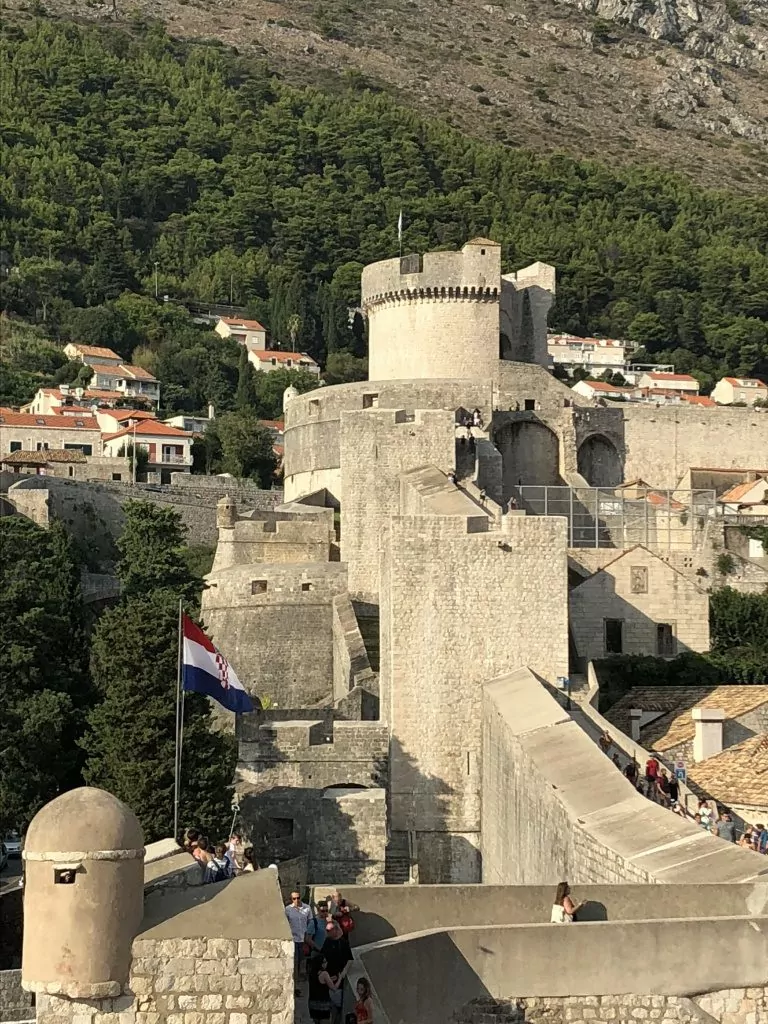
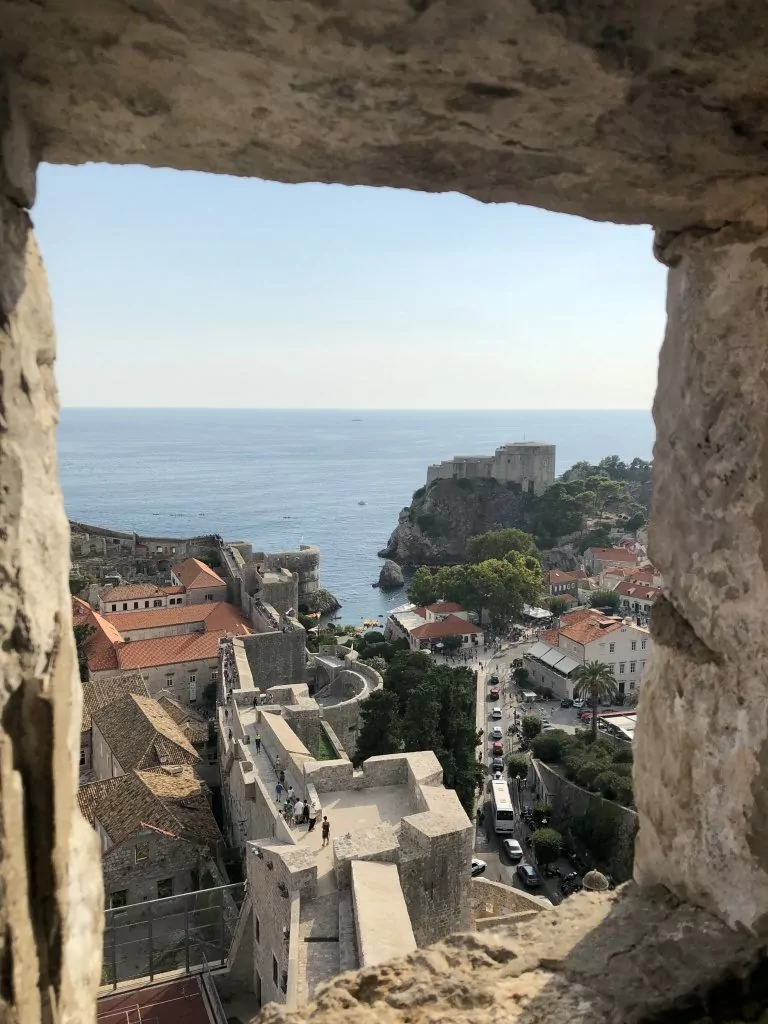
Hours: November-March 9:00 - 15:30, October 08:00 - 17:30, April-September 08:00 - 18:30.Day 8: Copacabana Beach and Sibenik
Copacabana, located on the Lapad peninsula, is one of the best-known beaches in Dubrovnik, yes for the sea, but above all because it offers comfort, relaxation and many water sports to spend a fun-filled day. From the beach there is a beautiful view of Daksu Island, while on the other side you can see the Franjo-Tuđman Bridge. Let's rent a jet ski and be children again!
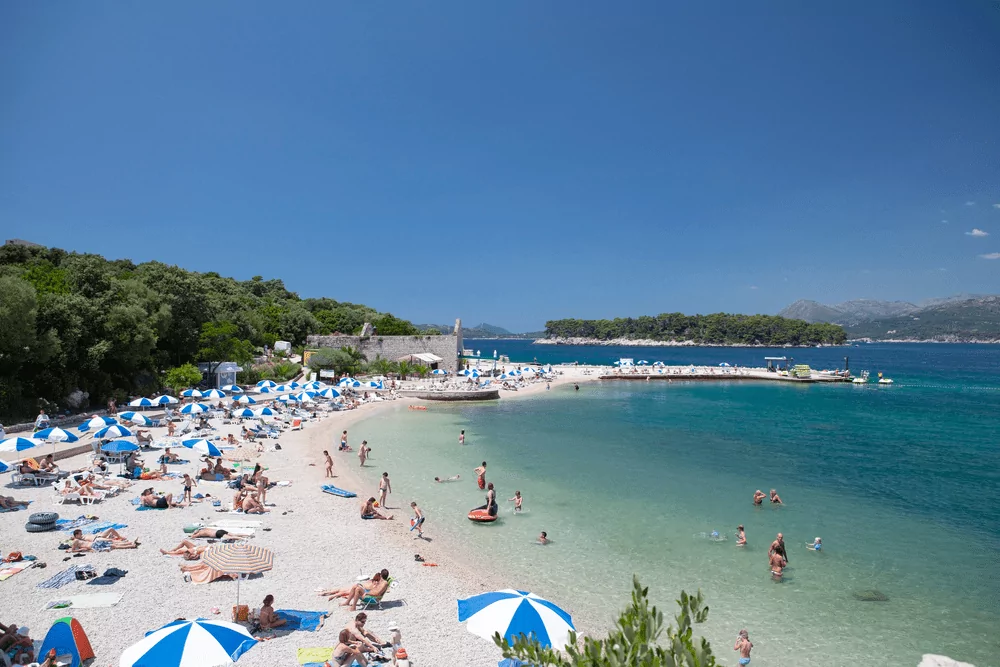
In the late afternoon we arrive at Sibenik, in time for dinner and a walk through the beautiful alleys of the city. The initial idea was to arrive immediately after lunch to be able to spend the whole afternoon around the city, but the beach sucked us in, so I'll summarize the stops we wanted to do but which remained in my head:
- Republic square;
- St. James Cathedral;
- City Hall Sibenik;
- Pilgrim Palace;
- Monastery and church of San Lorenzo;
- Fortress of San Michele;
- Zapadni ulaz Bedem Šibenik;
- Banj Beach.
Day 9: Krka National Park and Zadar
We dedicate the day to the Krka National Park, the second most visited national park in the country. The park is located in the hinterland of Sibenik and covers an area between the course of the Krka river and the lower stretch of the Čikola river, which when they meet create a spectacular landscape. Here it is possible to purchase tickets and have always updated information on times and prices.
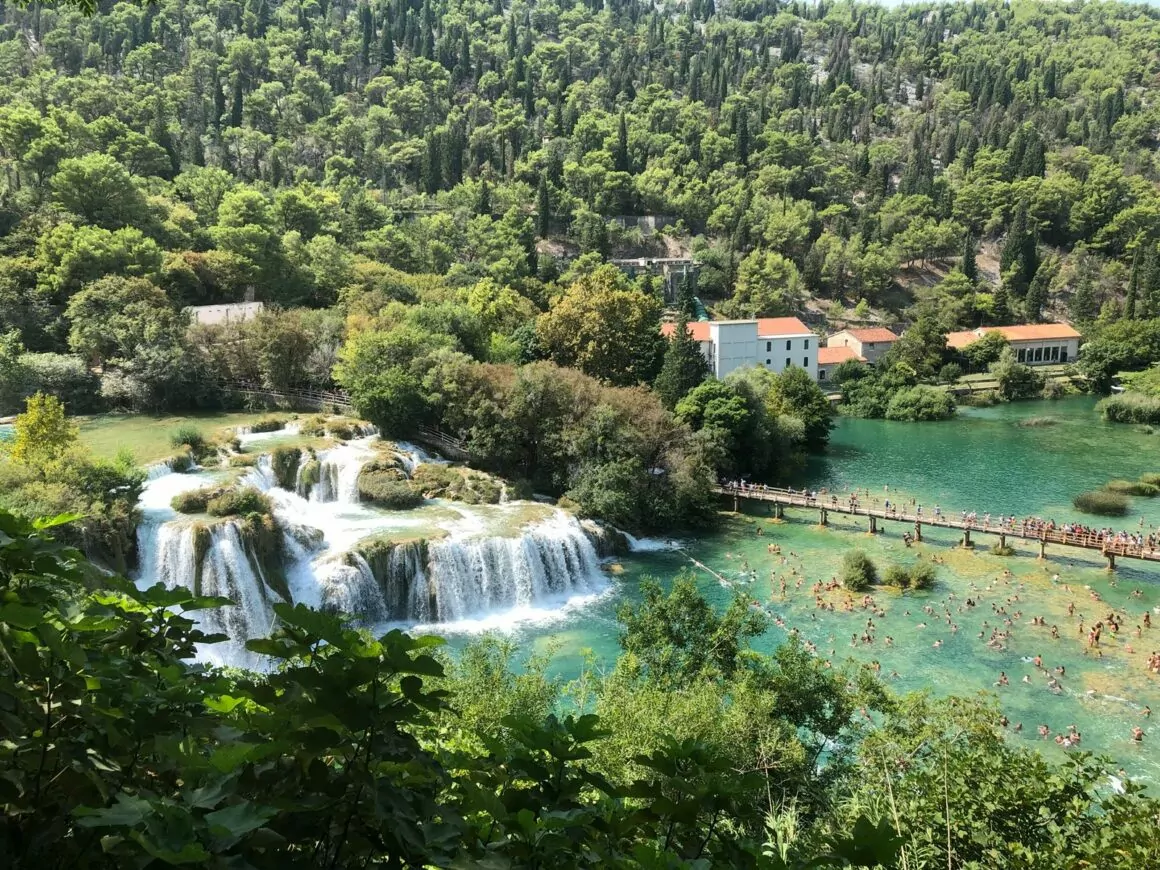
Opening times: Lozovac and Skradin entrances from 8:00-18:00, Roski Slap entrance from 9:00-17:00 and Burnum/Puljani 9:00-15:00.We dedicated the morning to the lower part of the park where the waterfalls are formed by a series of terraces where the Krka and Čikola rivers pour down 17 travertine steps into deep pools before flowing into the 7 subsequent waterfalls, creating the famous Skradinski Buk which towers 45 meters high. A path made up of walkways and paths has been built above this stretch of river which crosses the woods. Along the way you come across some restored watermills, some of these buildings have been transformed into small souvenir shops and restaurants, while others serve as ethnographic museums. On the left bank of the river there are the remains of Croatia's first hydroelectric plant and the second oldest hydroelectric plant in the world – Jaruga I – operational from 1895 until the First World War when it was dismantled for military reasons.
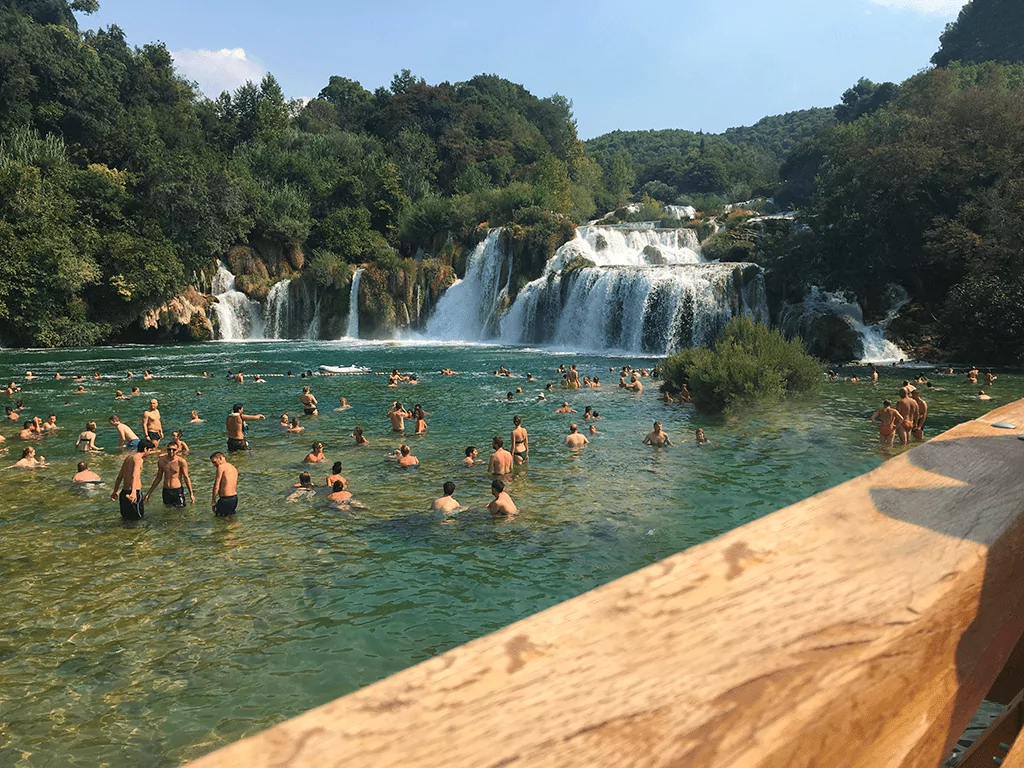
After a big barbecue in the heart of the park, we go up the Krka river towards Roški slap. The canyon in this part of the river widens to form a lake: the beginning of the travertine barriers is made up of a series of small waterfalls (called necklaces), while halfway there are small islands and ponds. The main waterfall is located at the end of the barrier and drops 15 m into Lake Visovac. Here, even in the middle of August it is not too crowded with tourists and on the pier near the mill it is possible to relax and enjoy the peace of the place immersed in nature.
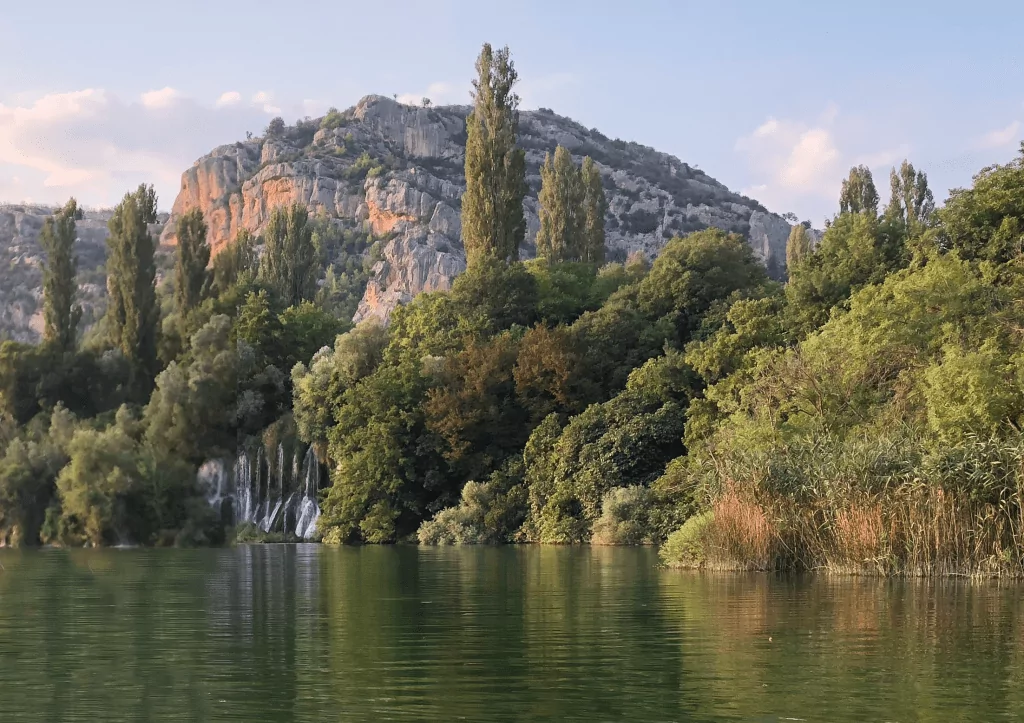
We get back in the car and leave for Zadar. We are only staying one night so we don't miss the opportunity to end the day admiring two modern installations, which have now become Zadar's main attractions and the pride of the place: theMarine organ and the Greeting to the Sun.
L'Marine organ it is a work by architect Nikola Bašić who – combining human ingenuity and the extraordinary force of nature – allows the sea itself to compose and perform incredible symphonies. The organ is made up of seven steps that descend towards the sea below which 35 pipes are positioned: the latter are crossed by the air which is pushed by the motion of the sea waves and produce sounds thanks to openings placed under the feet of the passers-by.

Continuing along the seafront you come across the architect's second installation, the Greeting to the Sun, a work made up of 300 glass sheets placed on the same level as the stone-paved seafront in the shape of a circle of 22 meters in diameter. Next to the main installation (the Sun), looking from the west side there are similar smaller installations representing the other planets of the solar system. Thanks to photovoltaic cells, the work absorbs the day's solar energy and releases it in a vivid multicolored graphic display when the sky begins to darken, giving a show of lights and colors overlooking the sea.
Day 10: Zadar and Kraljičina plaža
In the morning we visit the main attractions of Zadar. We access the "heart" of Zadar by crossing the Gradski Most, from which you can enjoy an excellent view of the ancient walls of the old city.
The first stage is Five Wells Square built in 1574 during the siege of the army of the Ottoman Empire to guarantee the city's water supply. Their construction replaced the ancient ditches. Nearby you can admire the Captain's Tower, a pentagon-shaped structure that represents the only remnant of the ancient medieval fortifications.
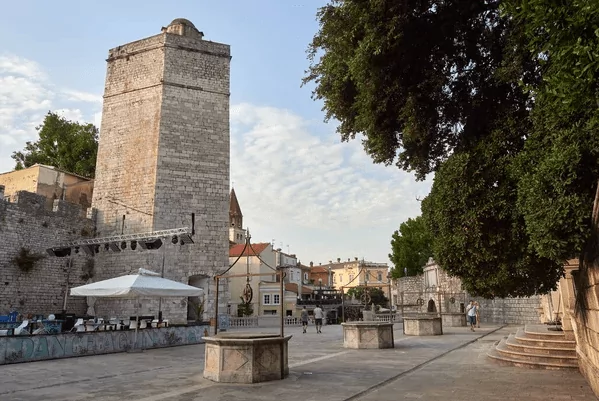
The Roman forum, built between the 1st and 3rd centuries BC. C., is the largest in all of Croatia, thanks to its 90 meters of extension. He managed to preserve the original flooring and numerous other remains. The forum also housed the largest temple in the city dedicated to Jupiter. Due to an earthquake, around the 6th century AD. C., many buildings were destroyed.
Behind him is the Church of San Donato, one of the symbols of Zadar thanks to its characteristic circular shape which ends with a 27 meter high dome. On the east side of the church there are three apses. In 1798 it was deconsecrated and used as a military warehouse until 1887 when it became the seat of the Archaeological Museum for some time. Today it is used as a venue for concerts and conferences.

We conclude the tour with Church of Santa Anastasia built between 1100 and 1200 over the remains of an ancient church. The facade is characterized by rich decorations. The interior is spread over three naves and on the altar of the apse there is a concrete sarcophagus where the remains of Santa Anastasia are kept. The cathedral was heavily damaged during the Second World War and had to be rebuilt. Climbing to the top of the bell tower you can enjoy a unique view of the town.
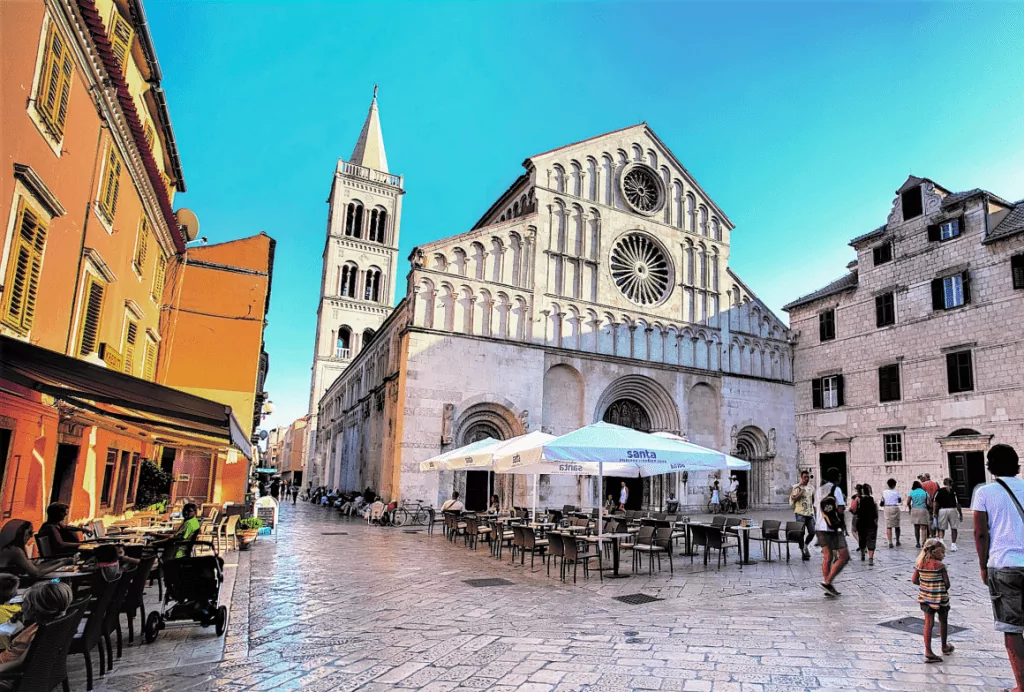
Just before lunch we move to the coast for lunch by the sea and a last swim before hitting the road to return home. There Kraljičina Plaža it is a bay where the water level is low and the beach is sandy. Along the shore there are numerous bars where you can have a cold drink or eat

Once all the Kunas are finished we set off towards Italy, towards Trieste, an intermediate stop to break the journey home.
Day 11: Trieste and return
Our day in Trieste starts from Unity of Italy Square, famous for being the largest square in Italy overlooking the sea. In the center the famous one Fountain of the Four Continents. The four statues at the corner of the basin represent Europe with the horse, Asia with the camel, Africa with the lion and America with the crocodile.
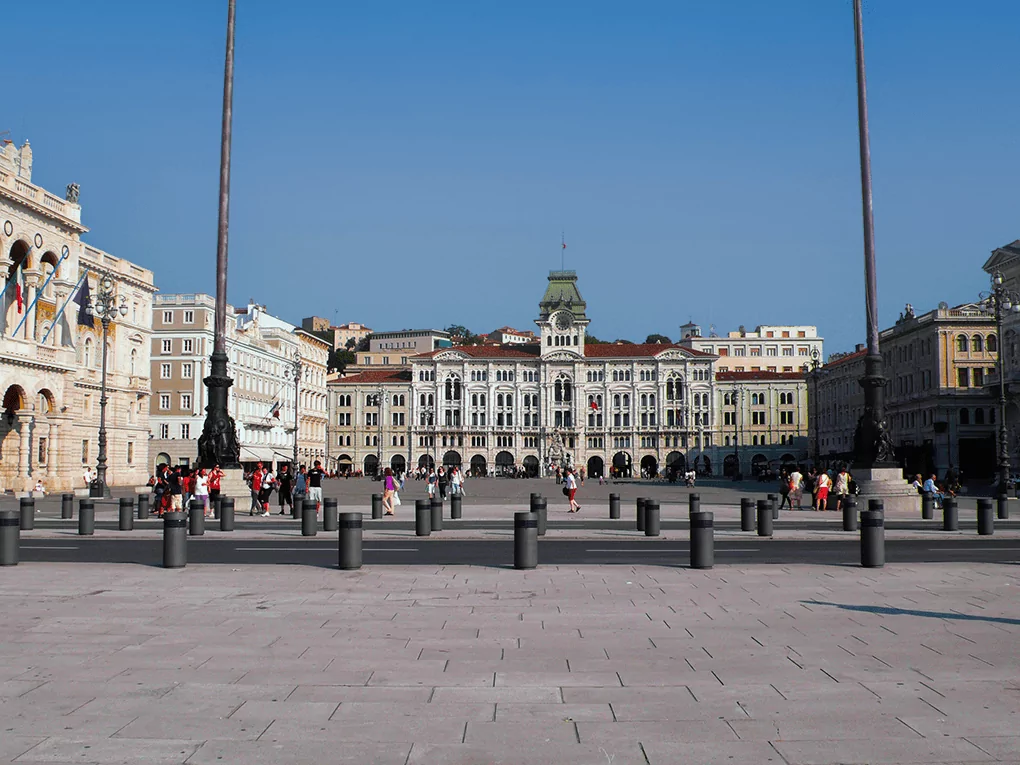
We enter the old city and get lost in the streets. We pass under theRichard's Arch which according to some sources is one of the first Roman gates of Trieste built in the 1st century BC in the ancient walls of the Roman Tergeste built by Augustus in 33 BC. The origin of its name could be linked to the passage of Charlemagne or Richard the Lionheart in the city or be traced back to the alteration of the term "cardo" (Latin name of one of the two main axes of Roman cities).
We go up the hill through the spectacular Giants' Ladder and we arrive at Remembrance Park characterized by a series of karst stones on which the names of the Triestians who fell in the wars and the departments to which they belonged were written.
Last stop is the San Giusto Castle, symbol of the city. Wanted by the emperors of Austria, it was built in successive stages from 1468 to 1636, reaching its current appearance as a triangular fortress equipped with bastions at the top. It can only be visited in part: in particular, in addition to the lapidary, the chapel, the Caprin room, the large internal courtyard - home to events in the summer - and the bastions, from which you can enjoy a broad panorama of the city, are accessible.
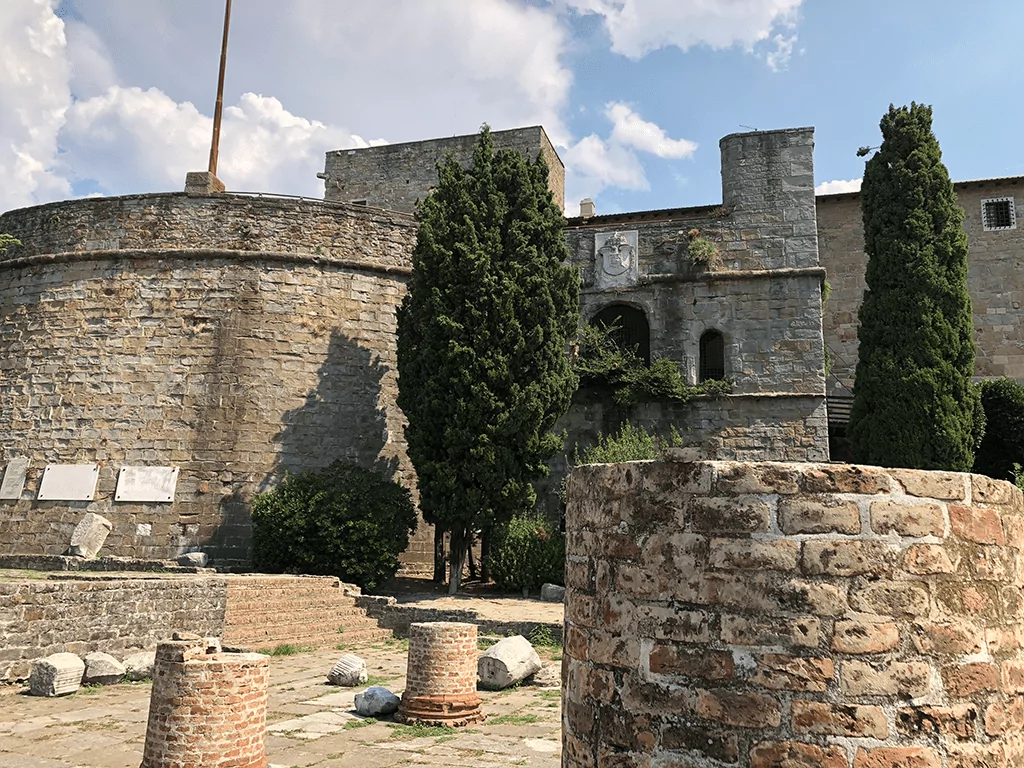
Opening hours: 1 April - 30 September every day 10:00 - 19:00, 1 October - 31 March from Tuesday to Sunday 10:00 - 17:00.We return home with the feeling that we have missed a lot and that Croatia still has a lot to tell. We promise to pay another visit as soon as possible.
